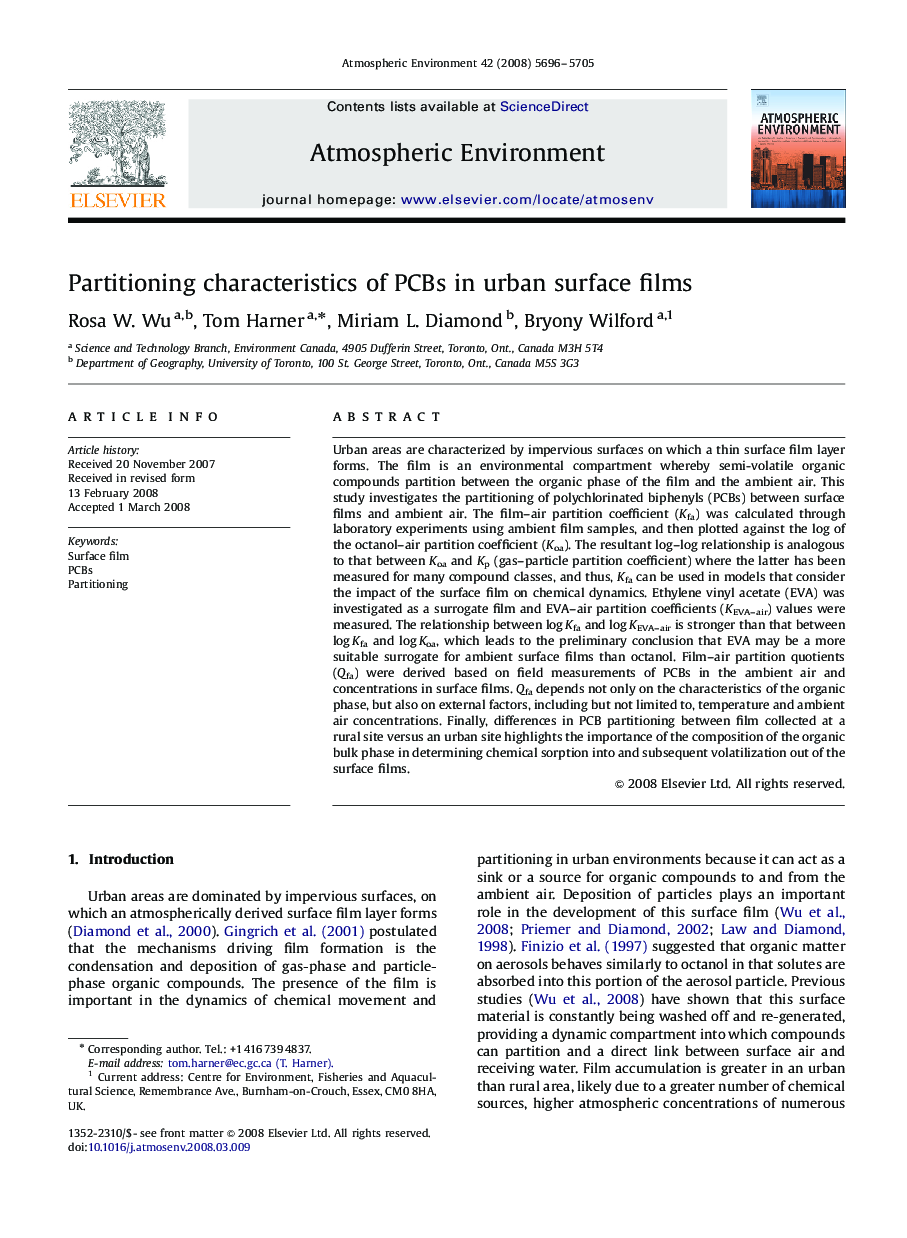| Article ID | Journal | Published Year | Pages | File Type |
|---|---|---|---|---|
| 4442101 | Atmospheric Environment | 2008 | 10 Pages |
Urban areas are characterized by impervious surfaces on which a thin surface film layer forms. The film is an environmental compartment whereby semi-volatile organic compounds partition between the organic phase of the film and the ambient air. This study investigates the partitioning of polychlorinated biphenyls (PCBs) between surface films and ambient air. The film–air partition coefficient (Kfa) was calculated through laboratory experiments using ambient film samples, and then plotted against the log of the octanol–air partition coefficient (Koa). The resultant log–log relationship is analogous to that between Koa and Kp (gas–particle partition coefficient) where the latter has been measured for many compound classes, and thus, Kfa can be used in models that consider the impact of the surface film on chemical dynamics. Ethylene vinyl acetate (EVA) was investigated as a surrogate film and EVA–air partition coefficients (KEVA–air) values were measured. The relationship between log Kfa and log KEVA–air is stronger than that between log Kfa and log Koa, which leads to the preliminary conclusion that EVA may be a more suitable surrogate for ambient surface films than octanol. Film–air partition quotients (Qfa) were derived based on field measurements of PCBs in the ambient air and concentrations in surface films. Qfa depends not only on the characteristics of the organic phase, but also on external factors, including but not limited to, temperature and ambient air concentrations. Finally, differences in PCB partitioning between film collected at a rural site versus an urban site highlights the importance of the composition of the organic bulk phase in determining chemical sorption into and subsequent volatilization out of the surface films.
